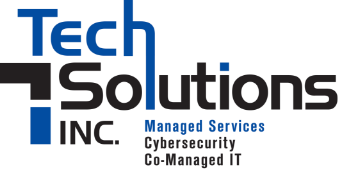Every October, the Cybersecurity and Infrastructure Security Agency (CISA) partners with organizations nationwide to promote Cybersecurity Awareness Month. This initiative is designed to remind individuals and businesses alike that cybersecurity is both an IT concern AND a business imperative.
In today’s digital-first world, cyber threats are evolving faster than ever. Ransomware gangs, phishing attacks, and data breaches are no longer just “big company” problems but also affect small and mid-sized organizations daily. According to recent industry reports, over 40% of cyberattacks now target small businesses, many of which lack the layered defenses of larger enterprises.
The good news? With a proactive approach, you can drastically reduce your organization’s risk. This year, CISA is emphasizing four essential practices that every individual and business should adopt to strengthen their cybersecurity posture. Let’s break them down and talk about why they matter for your business.
1. Watch Out for Phishing
Phishing is still the most common way attackers trick employees into handing over passwords, financial details, or sensitive company information. These emails or text messages often appear to come from a trusted source such as a bank, vendor, or even a colleague, but contain malicious links or attachments instead of the content they advertise.
Why it matters for businesses: It only takes one click for a bad actor to compromise your entire network. A single employee falling victim to a phishing scam could give attackers access to email accounts, financial systems, or client data.
Best practices:
- Train employees to verify unexpected messages, even if they look legitimate.
- Encourage the habit of hovering over links before clicking.
- Establish an easy way for staff to report suspicious emails to IT.
2. Use Strong Passwords
Weak or reused passwords are one of the easiest ways for attackers to break into systems. Too often, people reuse the same password across multiple accounts, meaning a single breach elsewhere can expose your business credentials
Why it matters for businesses: Stolen or weak passwords are involved in over 80% of hacking-related breaches. Once attackers have access to one account, they often move laterally across systems, escalating the damage.
Best practices:
- Encourage the use of passphrases (at least 12–16 characters including special characters).
- Adopt password managers to securely store and generate unique credentials.
- Eliminate shared accounts wherever possible.
3. Turn On Multifactor Authentication (MFA)
Even the strongest password can be stolen. That’s where multifactor authentication comes in. Requiring an extra step such as a text code, mobile app prompt, or physical security key to confirm a login can be the key to avoiding a large-scale breach.
Why it matters for businesses: MFA is one of the simplest and most effective tools to stop unauthorized access. Microsoft estimates that MFA can prevent 99% of automated attacks. That means even if a criminal steals your password, they still can’t get into your account or system without a second confirmation factor.
Best practices:
- Require MFA for all business-critical systems, especially email, cloud platforms, and financial apps.
- Use authenticator apps or security keys rather than SMS codes when possible, as they’re harder to intercept.
- Regularly audit which accounts have MFA enabled to ensure full coverage.
4. Keep Software Up to Date
Cybercriminals constantly look for vulnerabilities in outdated software. When patches and updates are released, attackers know businesses often delay installing them, thus creating a window of opportunity to exploit systems.
Why it matters for businesses: An unpatched server, laptop, or even network printer can be the entry point for a breach. Keeping everything current reduces the attack surface and closes security gaps
Best practices:
- Enable automatic updates for operating systems and applications whenever possible.
- Apply security patches quickly, especially for internet-facing systems.
- Maintain an inventory of devices and applications to ensure that nothing is overlooked.
The Bigger Picture
Cybersecurity Awareness Month isn’t just about individual user habits. It’s about building a culture that fosters a security first mindset. When every employee understands the role they play, your business becomes much harder to compromise.
Cybersecurity also requires balance. While these four steps are critical, they’re only the beginning. Threat detection, data backups, disaster recovery planning, and security monitoring all play important roles in a comprehensive defense strategy. But by focusing on phishing awareness, strong passwords, MFA, and software updates, your organization builds a resilient foundation that drastically lowers the likelihood of a successful attack.
Cybersecurity can feel overwhelming, but the truth is simple: small, consistent steps make a big difference. By practicing these four essentials, you protect not just your systems, but also your employees, clients, and reputation.

